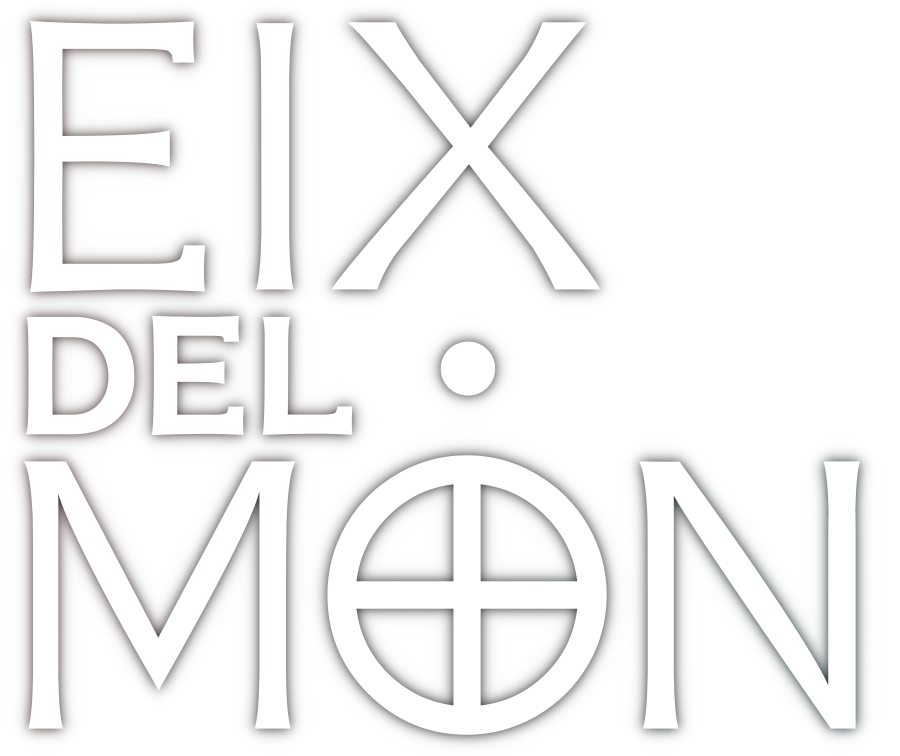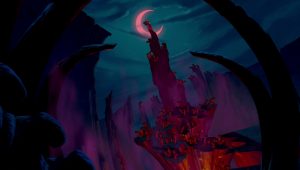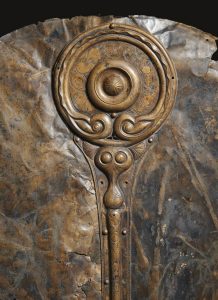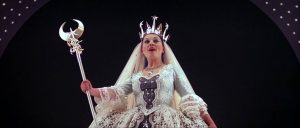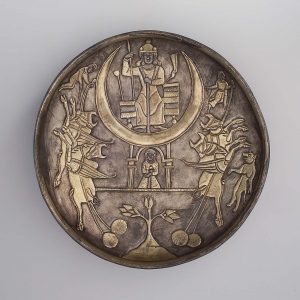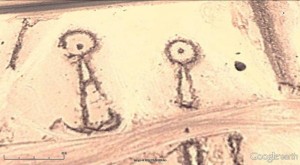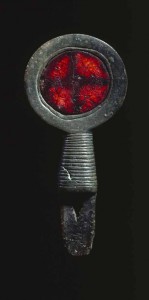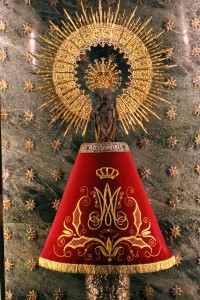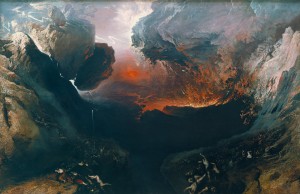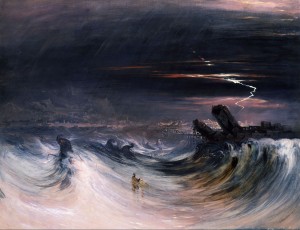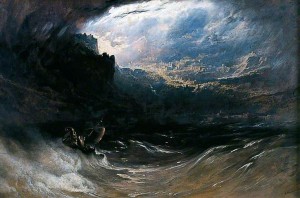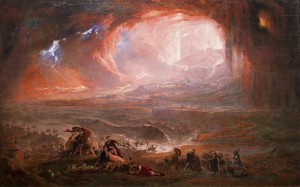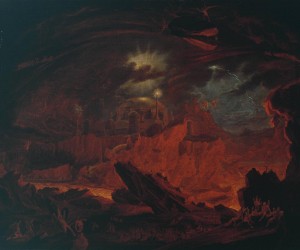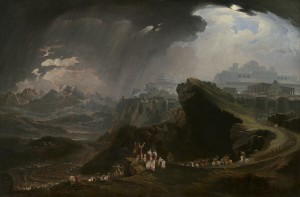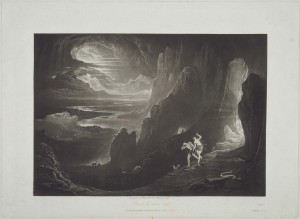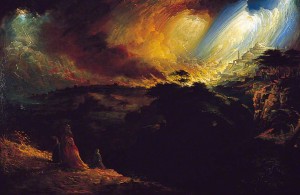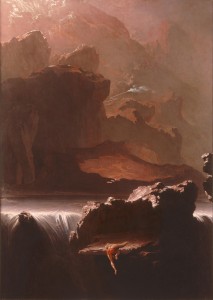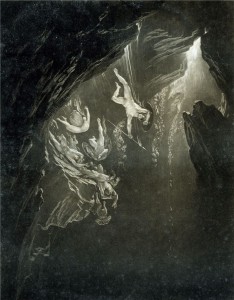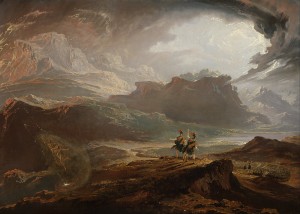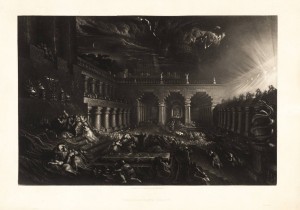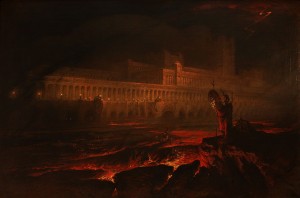Fragments of planetary destruction from “Rogue One” © Copyright 2016 Industrial Light & Magic, a division of Lucasfilm Entertainment Company Ltd., All Rights Reserved. Music: “Sand Mandala” by Philip Glass © Nonesuch Records.
Surely John Martin would be proud. The Death Star as depicted in “Rogue One” finally lives to its name. Here we find meticulously detailed the primeval catastrophes or disasters as they appear in countless mythologies. Just to remember:
Greek katastrophē, from katastrephein to overturn, from kata- (down) + strephein to turn.
Medieval French & Old Italian; Medieval French desastre, from Old Italian disastro, from the negative prefix dis- (from Latin) + astro star, from Latin astrum.
The pillar with a crescent and a star is seen elsewhere:
I wonder if it is a coincidence, now that Disney owns Lucasfilm, that the image of the Death Star firing at the Jedi Temple is so similar to that of Scar on top of a pillar, within the crescent moon (just like Mars, the scarred planet, in its ancient polar configuration would have been). The Lion King script (beginning with the title itself) is crowded with astral references. Surely its inspiration from Hamlet certainly would assist.
- H. de Santillana Giorgio; von Dechen, Hamlet’s Mill: An Essay on Myth and the Frame of Time, Nonpareil Books, 1977.
[Bibtex]@Book{deSantillanaVonDechendHamletsMill1977, title = {Hamlet's Mill: An Essay on Myth and the Frame of Time}, publisher = {Nonpareil Books}, year = {1977}, author = {de Santillana, Giorgio; von Dechen, Hertha}, comment = {isbn:9780879232153, amazon:0879232153, google:ql7ATHGee50C}, file = {deSantillanaVonDechendHamletsMill1977.pdf:media/trismegisto/Vitamin/Documents/Bibliography/deSantillanaVonDechendHamletsMill1977.pdf:PDF}, keywords = {Phylosophy, Mythology}, review = {Ever since the Greeks coined the language we commonly use for scientific description, mythology and science have developed separately. But what came before the Greeks? What if we could prove that all myths have one common origin in a celestial cosmology? What if the gods, the places they lived, and what they did are but ciphers for celestial activity, a language for the perpetuation of complex astronomical data? Drawing on scientific data, historical and literary sources, the authors argue that our myths are the remains of a preliterate astronomy, an exacting science whose power and accuracy were suppressed and then forgotten by an emergent Greco-Roman world view. This fascinating book throws into doubt the self-congratulatory assumptions of Western science about the unfolding development and transmission of knowledge. This is a truly seminal and original thesis, a book that should be read by anyone interested in science, myth, and the interactions between the two.}, timestamp = {2016-05-28} } - T. McElveen and M. Rohlfs, “Hamlet and The Lion King: Shakespearean Influences on Modern Entertainment,” , 1998.
[Bibtex]@Article{Hamlet-and-The-Lion-King, author = {Trey McElveen and Mrs. Rohlfs}, title = {Hamlet and The Lion King: Shakespearean Influences on Modern Entertainment}, year = {1998}, date = {1998-04-17}, url = {http://www.lionking.org/text/Hamlet-TM.html}, file = {Hamlet-and-The-Lion-King.pdf:Hamlet-and-The-Lion-King.pdf:PDF}, owner = {trismegisto}, timestamp = {2017-04-13}, }
I said John Martin would be proud. He would. Captions will be updated.
